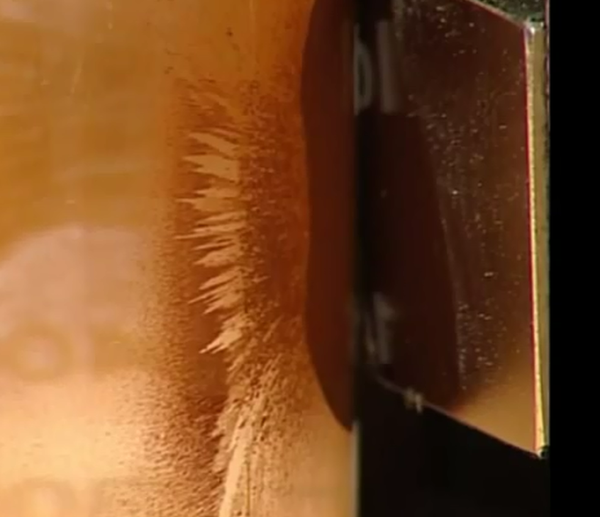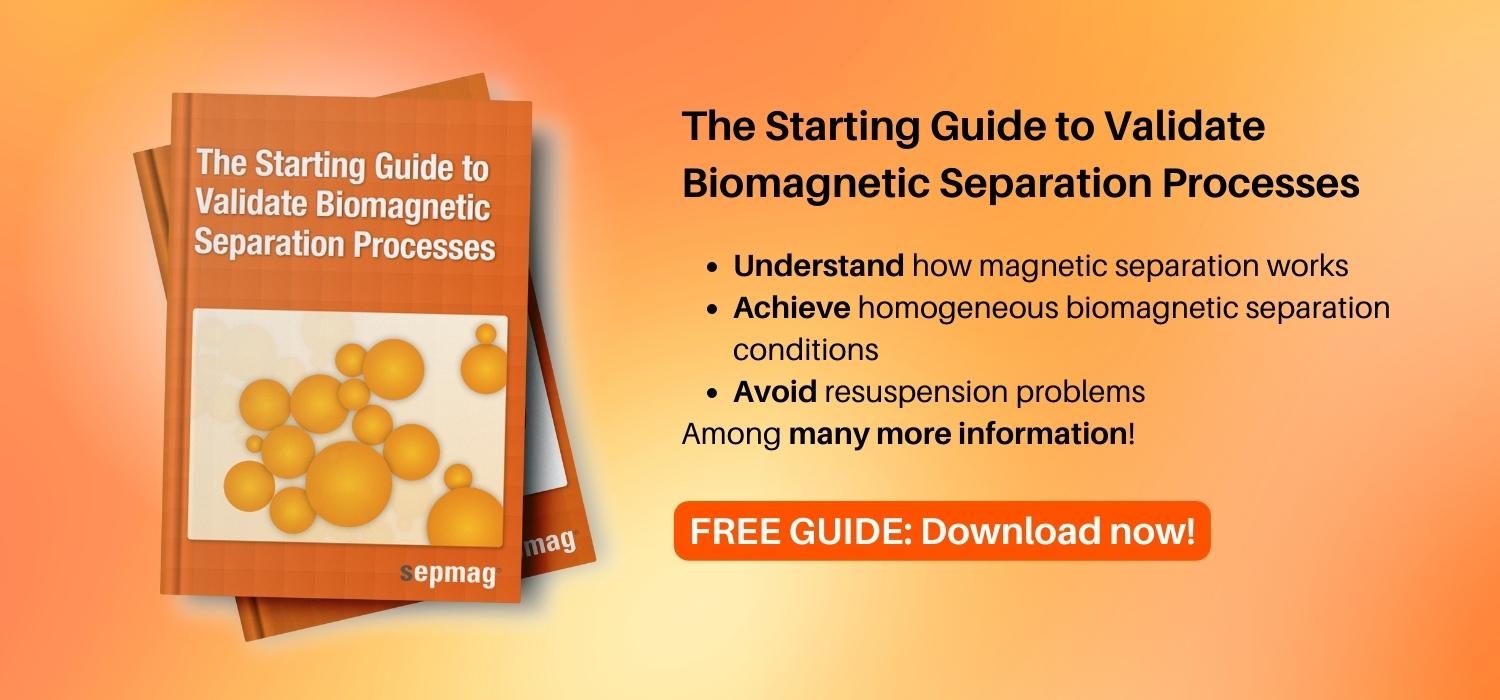Since reproducibility over time is a highly desired trait when using biomagnetic separation, especially when used in the life sciences, it is important to consider all possible disruptions of consistency. Biomagnetic separation devices use permanent magnets which maintain their properties over long periods of time.
This post is about magnetic bead separation and how to demagnetize biomagnetic separation devices. If you are interested in this topic, and are willing to learn more about it, download our Free Guide The Starting Guide to Validate Biomagnetic Separation Processes:
How can we demagnetize a moden magnetic bead separation device?
Modern devices use a rare earth magnet: neodymium iron boron (NdFeB), because of its outstanding properties. While NdFeB magnets are considered permanent, (i.e. have constant and consistent properties), even these magnets have potential limitations over time and can very slowly lose their magnetic properties.
It is important to consider these potential limitations and learn how to minimize them. Therefore, we have listed below the two major ways that human interaction can demagnetize a biomagnetic separator so that these conditions can be avoided.
1- High magnetic fields
If your magnet is exposed to a magnetic field of greater than 1 Tesla (which is greater than 20,000 times the Earth’s magnetic field), this can demagnetize a neodymium iron boron magnet.
The only device in a life science setting that can do this sort of damage is a hospital grade MRI.
2- High temperatures
If one heats a magnet high enough, a point can be reached which causes thermal agitation to overcome magnetic interactions, thus demagnetizing the material. An NdFeB magnet heated at 80ºC or more, over a minimal period of 30 years will cause the magnet to lose 0.5% of its magnetic force.
Therefore, if you work with your samples at 20 – 40ºC, you are fine. You will not be doing any damage to your biomagnetic separator. However, do not put your device into an autoclave! If you DO need to autoclave your biomagnetic separator, there are other magnets you can use in your device that will survive higher temperatures.
Because of this, an NdFeB magnet is a highly stable magnet and should have highly desired consistent properties when reproducibility issues are at stake.
_17.27.14.png)
If you found this article interesting and want to get a deeper insight in the topic of magnetic bead separation, make sure to check these articles from our blog:






